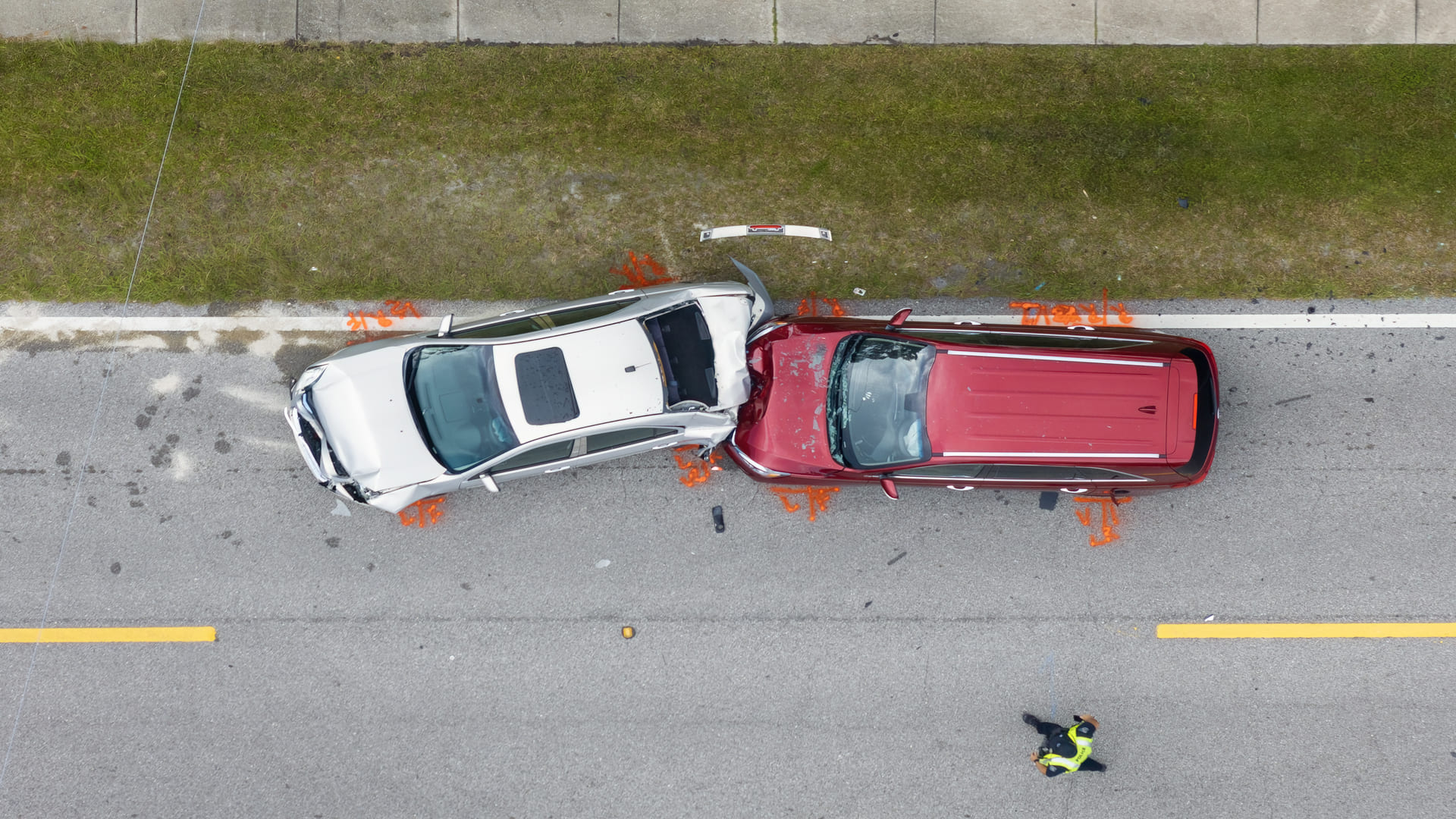Average Settlement for a Car Accident Back and Neck Injury in California

In California, the average settlement for a car accident relating to a back and neck injury is typically within the range of $15,000 to $10,000,000. This financial compensation aims to cover medical expenses, lost wages, and pain and suffering endured by the injured party.
Factors that influence settlement amounts include:
- Severity of the injury
- Duration of medical treatment
- Impact on daily life
- Evidence and documentation
- Involvement of witnesses
- Lost wages
- Pain and suffering
- Insurance coverage
- Liability
Despite this average range, consider the following settlement amounts that we’ve been able to help secure for our clients that surpass this:
- $4,200,000: Verdict awarded in the case of Barboza vs. Global Paratransit, stemming from a serious auto crash that resulted in a significant back injury. The incident occurred in Long Beach, highlighting the importance of safety in transportation services and the impact of such injuries on individuals’ lives.
- $2,500,000: Verdict awarded in the case of the Stewart Family vs. Orange County Sheriff Department following a serious auto crash during a car chase. The incident resulted in significant back injuries and emotional trauma for the family.
- $1,650,000: Settlement for an auto crash case resulting in a neck injury in Orange County. This was after we were able to prove the negligence of the other party, who was using their phone while driving, causing the accident.
For further guidance from an experienced San Bernardino car accident lawyer, take us up on our free consultation today
Neck and back pain after car accident settlement in more detail
Depending on the severity of the car accident, a neck or back injury can range from mild to severe and potentially life-altering.
💡 While every case is unique, personal injury settlement amounts examples show that claim values may vary significantly based on injury severity—ranging from tens of thousands for whiplash to millions for catastrophic harm.
Let’s look at some different car crash accident injuries and potential settlement amounts.

Lower back pain
Identifying a hit-and-run driver can be challenging, but there are several steps you can take to identify them and seek compensation:
The lower back pain car accident settlement average in California typically ranges from $50,000 to $200,000, depending on various specific circumstances surrounding the accident and the individual’s condition.
For instance, if the injury results in chronic pain requiring ongoing medical treatment, this can significantly elevate the settlement amount. Moreover, the circumstances of the accident, such as whether the injured party was a driver or a passenger, can also influence settlement outcomes.
Back injury settlement without surgery
The average back injury settlement without surgery in California typically ranges from $40,000 to $150,000.
This amount can fluctuate based on several specific situations unique to each case. For example, an individual’s age and overall health at the time of the accident can play a significant role; younger individuals with fewer pre-existing conditions tend to receive higher settlements.
Additionally, the type and extent of the injury, even if it doesn’t require surgical intervention—such as herniated discs or severe sprains—can lead to varying compensation amounts.
The capacity of the injured party to demonstrate the impact of the injury on their daily life, including limitations in work and recreational activities, further influences settlement negotiations.
Cases with clear documentation of ongoing physical therapy or other non-surgical treatments demonstrate the necessity of care and can justify larger settlements.
Additional reading: average payout for pedestrian hit by car in California
Neck injury settlement without surgery
A neck injury settlement without surgery in California typically ranges from $15,000 to $100,000. These types of claims often involve soft tissue injuries like whiplash, muscle strains, or disc bulges that do not require surgical intervention but still lead to significant discomfort and disruption.
Even without surgery, a neck injury can result in months of physical therapy, chiropractic treatment, medication, and time off work, all of which add up in terms of medical expenses and lost wages.
Insurance companies may attempt to undervalue non-surgical cases, but with proper documentation (including imaging studies, treatment records, and medical evaluations), these settlements can still be substantial. This is especially the case when supported by proof of ongoing pain or diminished quality of life.
Soft tissue back injury
Typical soft tissue back injury settlement amounts are $30,000 to $100,000 in California. These injuries typically encompass damage to muscles, ligaments, nerves, and tendons in the back and can vary in severity.
If an individual suffers from persistent soft tissue pain that leads to chronic issues or significant limitations in mobility, the settlement may be on the higher end of the spectrum.
Additionally, the treatment required for soft tissue injuries, such as physical therapy, chiropractic care, or massage therapy, also plays a critical role. If ongoing treatment is needed to manage pain and facilitate recovery, this can substantiate a larger settlement claim.
Additional reading: average whiplash settlement
How much compensation will I get for a broken neck?
The average settlement amount for a broken neck in a car accident in California typically ranges from $500,000 to $1,500,000. This significant variance can be attributed to the nature and severity of the injury, as well as the specific circumstances surrounding the accident.
For instance, if the broken neck results in partial or complete paralysis, settlements tend to be on the higher end of the scale due to the lifelong medical care and support that may be required.
Additionally, the impact of the injury on the individual’s ability to work has an impact. Those unable to return to their profession or requiring vocational rehabilitation can seek larger settlements to account for lost earnings and future earning potential.
Emotional and psychological impacts, such as post-traumatic stress disorder (PTSD) or depression, that arise from such traumatic injuries may also warrant additional compensation.
Additional reading: average settlement for a traumatic brain injury in California
SI joint injury from a car accident settlement
A typical SI joint injury from a car accident settlement is from $40,000 to $150,000.
The amount can vary significantly based on the nature of the injury and the overall impact on the victim’s lifestyle.
For instance, individuals who experience chronic pain or loss of mobility due to the injury may find their settlements leaning toward the higher end of this spectrum, particularly if the injury necessitates ongoing medical treatment such as physical therapy or injections.
An additional factor is the ability to demonstrate how the injury has hindered daily activities, such as difficulties with sitting, standing, or engaging in physical work.
Moreover, if an individual’s profession requires a high level of physical activity, the impact on their ability to work can greatly influence their compensation. This would warrant larger settlements if they need to change careers or face permanent job restrictions.
Back pain after being rear-ended settlements
Settlements for back pain after being rear-ended typically range from $50,000 to $300,000 in California. This wide range reflects the varying degrees of impact injuries can have on an individual’s life.
A specific situation that might influence this amount is the speed of the vehicles involved at the time of the crash; higher speeds may lead to more severe injuries.
Additionally, the type of vehicle the injured party was in—whether it was a compact car or a larger vehicle like an SUV—can also affect the extent of injury and subsequent settlement.
The severity of the back injury also plays a part. Some individuals may experience only temporary pain, while others could suffer from long-term complications, such as herniated discs or chronic pain syndrome.
Additional reading: average settlement for rear-end collision in California
Traumatic scoliosis car accident settlement
Traumatic scoliosis settlements in California range from $75,000 to $300,000.
One significant influence on this amount is the degree of curvature and its impact on daily activities. For instance, those experiencing severe curvature that limits their mobility or means they require assistance with basic tasks may be entitled to higher settlements due to the increased burden on their quality of life.
Additionally, the nature of the accident that caused the scoliosis can play a role; more severe accidents, such as high-impact collisions, are more likely to incur larger settlements.
The presence of associated injuries, such as fractures or neurological damage, can also elevate compensation amounts, especially if they exacerbate the challenges posed by the scoliosis.
Herniated disc
Settlements for a herniated disc from car accident settlement in California typically range from $15,000 to $500,000, depending on the severity of the disc damage and required treatment. Minor herniations treated with conservative care fall on the lower end, while severe cases involving spinal injections, surgery, or permanent pain tend to settle for higher amounts.
Insurance companies often scrutinize herniated disc claims due to their subjective symptoms, but strong diagnostic imaging (like MRIs), consistent treatment, and documentation of functional limitations can substantiate a larger payout. A claim is strengthened when the injury affects the claimant’s work or daily activities over the long term.
Whiplash
The average whiplash settlement in California typically ranges from $2,500 to $100,000+, depending on the duration and severity of symptoms. Mild cases involving short-term stiffness or headaches usually settle for lower amounts, while chronic whiplash with nerve involvement or long-term therapy can result in significantly larger settlements.
Whiplash can be deceptive—what initially feels like a minor strain may evolve into debilitating pain requiring months of care. If the injury disrupts work or personal life and is backed by proper medical documentation, insurance companies may offer more substantial compensation despite the soft tissue classification.
Spinal cord injury
Average settlement for a spinal cord injury in California commonly range from $50,000 to $3,000,000+, depending on the level of damage and long-term impact. Minor spinal cord contusions without lasting dysfunction may fall under six figures, while injuries involving paralysis, loss of mobility, or incontinence can result in multi-million-dollar settlements.
These injuries carry significant costs beyond medical bills—home modifications, wheelchairs, loss of employment, and emotional trauma all factor into a higher payout. Plaintiffs with strong legal representation and documentation of permanent impairment often secure life-changing compensation.
Cervical spine injuries
Cervical spine injury settlement amounts are often from $100,000 to more than $1 million, depending on how the injury affects the neck and spinal cord. These can include cervical disc herniation, radiculopathy (nerve root compression), or fractures.
Cervical spine injuries can lead to chronic pain, reduced range of motion, and neurological symptoms such as tingling or numbness in the arms. These claims are strengthened by imaging studies (MRI/CT), referrals to specialists, and evidence of lifestyle interference.
Paralysis (resulting from neck injury)
Settlements for paralysis caused by neck injuries typically range from $1,000,000 to $10,000,000+, reflecting the extreme physical, emotional, and financial consequences. These cases often involve high-level cervical spinal cord damage leading to quadriplegia or paraplegia.
Beyond immediate medical care, lifelong support—including caregivers, equipment, and lost lifetime income—is factored into compensation.
Pain and suffering awards are also significant due to the permanent loss of independence and quality of life. A well-prepared claim with expert testimony can help secure a high-value settlement.
Additional reading: mild traumatic brain injury settlements
We have an expert Torrance car accident lawyer available to guide you on your next steps!
Find Out What Your Neck Injury Claim from a Car Accident Could Be Worth Today
Estimate your compensation in seconds with our neck injury settlement calculator. Just enter your injury details to see what your claim might be worth.
Disclaimer: The results generated by this neck injury settlement calculator are for informational purposes only. They are not legal advice or a substitute for professional evaluation. The calculator provides a basic estimate based on general inputs and does not account for specific case details such as jurisdictional laws, liability factors, or unique circumstances.
Selected Value: 0%
How to maximize a settlement amount
To ensure you receive the maximum settlement amount for your injury, consider the following steps:
- Seek Immediate Medical Attention: Promptly visit a healthcare provider to assess and document your injuries. This creates a clear medical record that supports your claim.
- Keep Detailed Records: Document every aspect of your injury and recovery, including medical bills, rehabilitation reports, and any correspondence related to your case. This evidence will be essential during negotiations.
- Consult with an Attorney: Engaging a personal injury attorney from our firm can significantly enhance your understanding of your rights and help you navigate the complexities of your case. Our attorney can advocate on your behalf and negotiate effectively with insurance companies.
- Understand the Full Impact: Clearly articulate how the injury has affected your daily life, work capacity, and emotional well-being. The more comprehensive your explanation, the stronger your case will be.
- Avoid Early Settlements: Insurance companies may offer quick settlements to minimize costs. Evaluate the offer carefully and give yourself time to understand the full extent of your injuries before accepting anything.
- Engage in Therapy: If recommended, pursue ongoing physical therapy or mental health treatment. Not only does this contribute to your recovery, but it also shows the insurance company that you are taking your health seriously.
- Consult Experts: Obtain professional opinions from medical, vocational, and psychological experts to substantiate the extent of your injuries and their impact on your life.
- Be Honest and Accurate: Present truthful and accurate information throughout the claims process. Discrepancies can harm your credibility and reduce your settlement amount.

Factors influencing settlement values
- Severity of the Injury
- Duration of Medical Treatment
- Impact on Daily Life
- Evidence and Documentation
- Involvement of Witnesses
- Insurance Policy Limits
Severity of the Injury
The severity of the injury is one of the most critical determinants of settlement value. More severe injuries, such as fractures or permanent disabilities, typically warrant higher compensation due to the extensive medical treatment and recovery required.
Injuries that restrict mobility and daily functioning, or result in long-term consequences, will also significantly influence the settlement amount.
Duration of Medical Treatment
Longer treatment times generally indicate more severe injuries that can lead to higher compensation.
Ongoing medical care, physical therapy, or rehabilitation needs can contribute to additional costs, thereby increasing the potential settlement amount.
Impact on Daily Life
If the injury results in chronic pain, limitations on physical activities, or an inability to perform previously enjoyed tasks, this impact can be presented as part of the compensation claim.
A clear demonstration of how the injury impedes the quality of life is essential for maximizing settlement offers.
Evidence and Documentation
Gathering and maintaining comprehensive documentation related to the injured party’s medical history, treatment plans, and recovery is vital. This evidence supports the claim and provides a factual basis for the requested compensation amount.
Original medical records, bills, and treatment progress reports effectively substantiate the extent of the injury.
For example, if an individual develops scoliosis after a car accident, keeping track of x-rays, MRI scans, and doctor’s reports can demonstrate the progression of the curvature over time and its impact on daily life.
Involvement of Witnesses
Witness testimonies can provide additional perspectives and validation of the events leading to the injury, making it easier to establish fault.
Having credible witnesses can increase the likelihood of a favorable settlement outcome. For instance, a witness who saw the victim in a neck brace after the accident can testify to the severity of their injury and its impact on daily life.
Lost wages
If your injury prevents you from working temporarily or permanently, the total compensation will often include the income you would have earned during that time. This includes not only base salary or hourly wages but also:
- Missed bonuses
- Commissions
- Tips
- Any employer-provided benefits
In more severe cases where your injury causes long-term disability or limits your ability to return to your previous role, future earning capacity becomes a critical component of your settlement. To strengthen this claim, documentation such as past pay stubs, employer statements, tax returns, and a physician’s work restriction notice can help establish the financial impact.

Pain and suffering
Pain and suffering covers the non-economic damages caused by your injury, including physical pain, mental distress, emotional trauma, and loss of enjoyment of life. For back and neck injuries, this can include chronic pain, headaches, restricted movement, and related psychological conditions like anxiety or depression stemming from your condition.
Since pain and suffering doesn’t come with receipts, our attorney may use a “multiplier method” or “per diem method” to calculate it. This means the severity and long-term impact of your condition will directly influence the final figure. Medical records, personal journals, and expert testimony are often used to support this part of the claim.
Insurance coverage
If the at-fault driver has a low-limit policy or no insurance at all, your settlement may be limited unless you have uninsured/underinsured motorist (UM/UIM) coverage under your own policy.
For more serious back and neck injuries, where costs quickly exceed typical minimum coverage limits, identifying all applicable policies becomes critical. This might include employer policies, umbrella policies, or third-party liability coverage.
We can uncover these sources and help ensure you aren’t settling for less simply because the primary insurer has limited funds.
Liability
Liability refers to who was at fault for the accident, and how much fault each party shares. In California, comparative fault laws allow your compensation to be reduced by your percentage of fault. If you’re found 30% responsible for the crash, for example, your final award would be reduced by that amount.
Strong liability evidence, such as police reports, witness statements, dashcam footage, or expert accident reconstruction, can make or break your case.
The clearer it is that the other driver caused the accident, the stronger your negotiation position becomes. If liability is disputed, insurance companies may offer a lower settlement to reflect the uncertainty.

California car accident laws affecting settlements
One of the key elements to be aware of is the comparative fault rule, which operates under the principle that a victim’s compensation can be reduced based on their degree of fault in the incident. If a claimant is found to be partially responsible for their injuries, their settlement will be adjusted proportionally.
For example, if you were deemed 30% at fault, your recovery would only amount to 70% of the total damages awarded.
Additionally, California does not follow a no-fault insurance system; instead, it adheres to a tort liability model, meaning that the party at fault for the accident is responsible for compensating the victim. This framework allows injured parties to seek compensation for damages such as medical expenses, lost wages, and pain and suffering.
Moreover, California law mandates certain insurance coverages, including uninsured motorist (UM) and underinsured motorist (UIM) coverage. These protections are particularly important in accidents involving drivers who lack sufficient insurance or are entirely uninsured.
UM coverage compensates for injuries and damages caused by uninsured drivers, while UIM assists when the at-fault party’s insurance limits are insufficient to cover the full extent of the damages.
Finally, be aware of the statute of limitations for filing claims, which in California is typically two years for personal injury cases. Missing this deadline can result in the loss of your right to seek compensation, so it’s vital to act promptly if you’ve been involved in an accident.
Additional reading: Uber passenger accident settlement amounts
Our Huntington Beach car accident lawyers are available to give you further confirmation on your deadline to file a claim
The process for neck and back injury settlements
The process for securing settlements for neck and back injuries involves several essential steps that ensure a strong claim is presented.
Below is an overview of the key phases:
1. Initial Evaluation and Documentation
The first step in the process of securing settlements for neck and back injuries involves a thorough initial evaluation of the injury. This includes acquiring a detailed medical assessment from a healthcare professional who can accurately diagnose the extent of the injury and recommend appropriate treatment plans.
Documentation is vital at this stage; gathering all medical records, examination findings, and diagnostic imaging is vital, as this evidence will form the backbone of the settlement claim.
Following the initial evaluation, maintain a detailed pain journal that tracks the severity of symptoms, limitations in daily activities, and responses to treatment over time. This journal can provide compelling evidence of the injury’s impact on quality of life when negotiating with insurance companies or opposing parties.
Additionally, collecting statements from family, friends, or colleagues who have witnessed the change in daily activities due to the injury can further substantiate the effects of the injury and strengthen the claim for appropriate compensation.
2. Negotiation with Insurance Companies
Negotiating with insurance companies can be one of the most challenging aspects of securing a settlement for neck and back injuries. A solid strategy and preparation are paramount to ensure that the injured party receives fair compensation.
Initially, establish a clear understanding of the total damages incurred, encompassing medical expenses, lost wages, and intangible losses such as pain and suffering. This comprehensive assessment should be thoroughly documented to present a compelling argument to the insurance adjuster.
When entering negotiations, remain calm and assertive, presenting evidence systematically and articulating how the injury has fundamentally altered the individual’s life. Claimants should be prepared for potential low initial offers and understand that negotiations often involve back-and-forth communication.
Building a rapport with the adjuster while being firm on the details of the claim can help foster a more productive negotiation environment.
Moreover, leveraging expert opinions, such as those from medical professionals or accident reconstruction specialists, can provide additional weight to the claim.
We understand that this sounds like a stressful ordeal, which is why our team will handle all of the communication and negotiation on your behalf. Contact us today to find out how!
3. Consultation with Medical Professionals
Medical professionals not only provide essential insights into the nature of the injuries sustained but also play an integral role in developing effective treatment plans.
To strengthen your claim, seek opinions from specialists, such as orthopedic surgeons or neurologists, who can provide detailed assessments and expert testimony regarding the extent of the injuries.
Additionally, obtaining ongoing treatment records and following recommended rehabilitation protocols are vital for demonstrating the seriousness of the injury. Consistent medical follow-ups and adherence to treatment can help establish a clear link between the accident and the injuries sustained, reinforcing the legitimacy of the claim.
Considerations such as potential long-term effects and future medical needs should also be discussed and documented, as these can significantly impact the settlement amount.
Moreover, involving medical professionals in the negotiations can enhance the credibility of the claim; they can provide vital evidence illustrating how the injuries affect daily life and long-term functionality.
4. Legal Representation
Engaging legal representation can be a pivotal decision in the process of obtaining a settlement for neck and back injuries. An experienced personal injury attorney from Feher Law brings invaluable expertise and knowledge, which can significantly influence the outcome of a case.
We understand the nuances of California tort law, from filing timelines to the intricacies of proving liability and damages.
A lawyer from our firm can also help assess the strength of the claim and provide advice on the most appropriate strategy to pursue compensation. This includes:
- Gathering evidence
- Filing necessary documentation
- Negotiating with insurance companies effectively
Additionally, having legal counsel can alleviate the stress of dealing with the aftermath of an injury, allowing you to focus more on recovery rather than the complexities of legal processes.
Moreover, if negotiations reach an impasse, we can prepare for litigation, ensuring that your rights are fully protected. We have the resources and knowledge to engage expert witnesses, prepare compelling arguments, and represent you in court if necessary.
Additional reading: what is the average settlement for nerve damage
How we can help
The legal burden of a settlement for neck and back injuries can be daunting, but you don’t have to face it alone. Feher Law is here to provide the support and expertise you need.
We understand the challenges that come with securing fair compensation and are committed to advocating on your behalf throughout every stage of the process.
From conducting thorough evaluations and gathering essential documentation to negotiating with insurance companies or preparing for litigation, our California car accident lawyers have the resources to help you build a strong case.
If you or a loved one has suffered from a neck or back injury, reach out to us today for a free consultation. Let us help you reclaim your life and receive the compensation you deserve!
FAQs
Does MRI increase settlement?
Yes, having an MRI can increase your settlement. It provides clear, objective evidence of internal injuries like herniated discs or soft tissue damage. Insurance companies often place more value on claims supported by imaging, which helps justify higher compensation for pain, medical treatment, and long-term impact.
How serious is a cervical spine injury?
Cervical spine injuries can be very serious, affecting the neck, nerves, and even mobility. Damage to this area may lead to chronic pain, numbness, or even paralysis in severe cases. These injuries often require long-term treatment and rehabilitation, making them high-value claims in car accident settlements.
How much compensation for anxiety after a car accident?
Compensation for anxiety after a car accident varies, typically ranging from $5,000 to $100,000+, depending on severity, duration, and how it impacts daily life. Strong medical documentation from a therapist or mental health provider can help support your claim for emotional distress and raise your potential settlement.
What is classed as a severe back injury?
A severe back injury typically involves spinal cord damage, fractured vertebrae, herniated discs, or injuries requiring surgery. These can lead to chronic pain, nerve damage, or permanent disability. Such injuries significantly impact mobility and quality of life, often resulting in higher settlements due to long-term treatment and limitations.
What is the impairment rating for a neck injury?
The impairment rating for a neck injury depends on the degree of permanent damage and its effect on daily activities. Ratings may range from 5% to over 30% for serious cases. Higher ratings reflect greater loss of function, which can directly increase compensation in a personal injury claim.
Related Posts

DUI Accident Settlement Calculator in California

Woman Killed in Long Beach Crosswalk Crash

Miriam Marroquin Killed in Boyle Heights Car Crash


Facial Scarring Compensation Calculator in California



